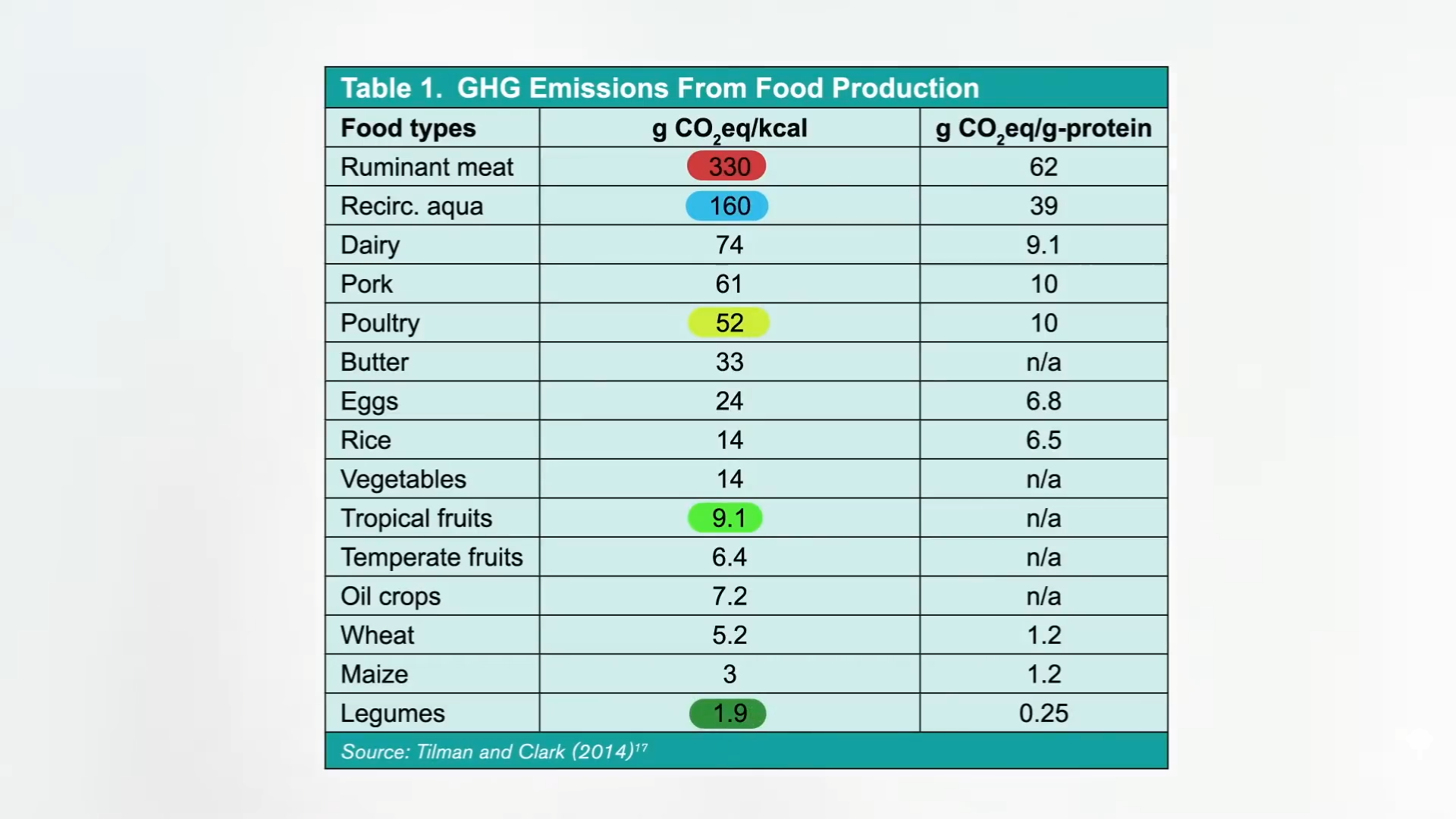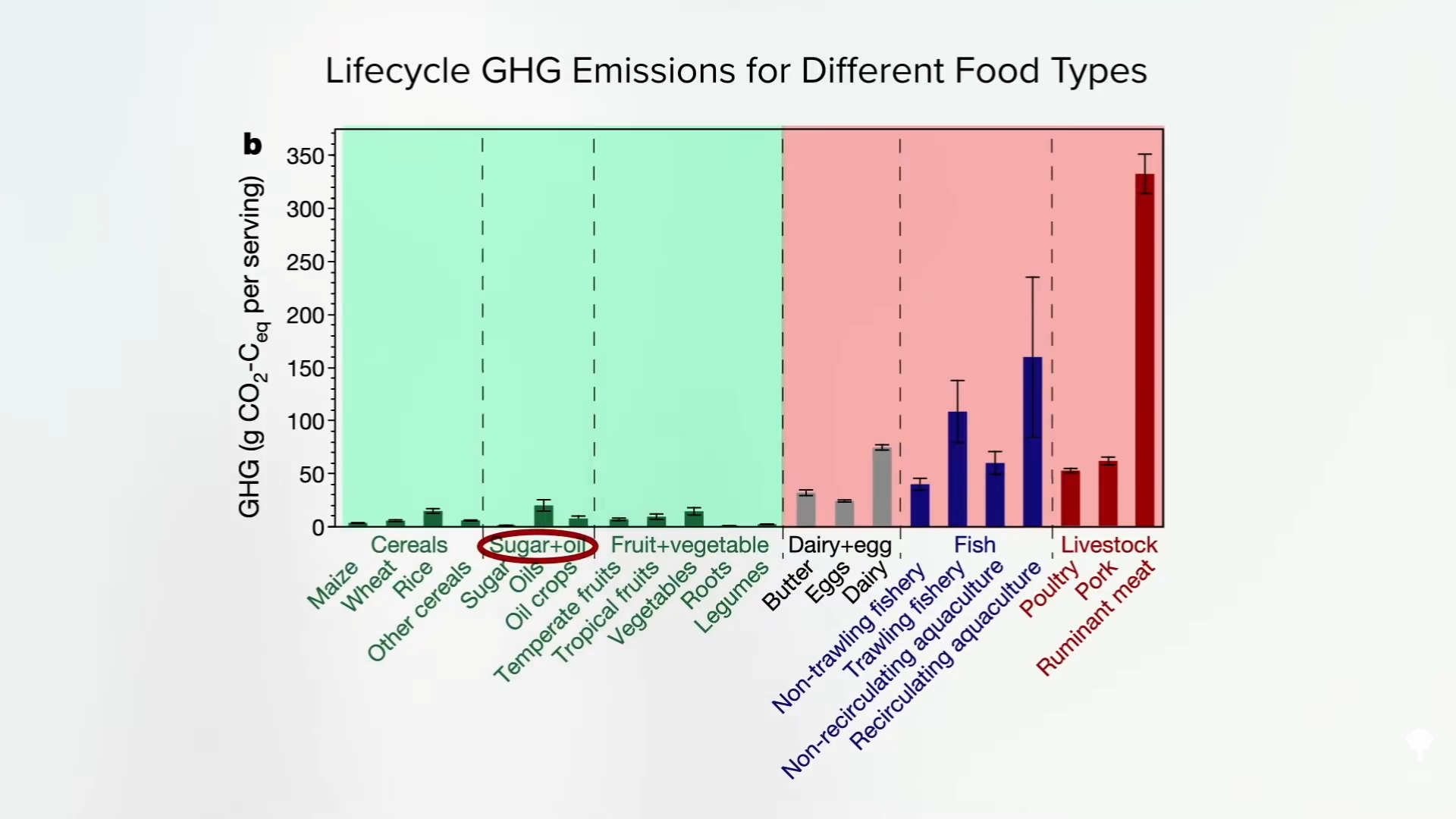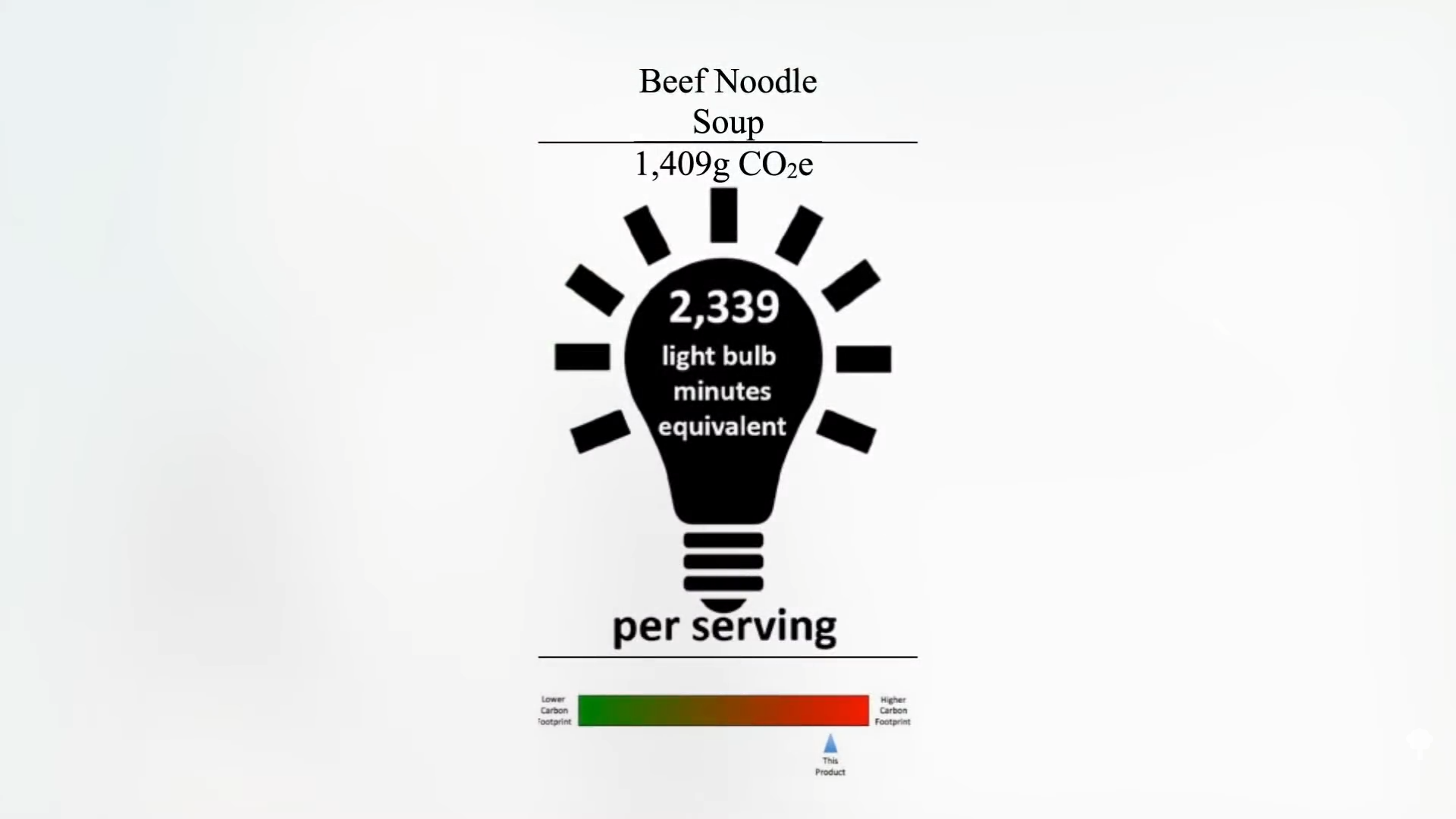How much greenhouse gas does the production of different foods cause, measured in miles driven or lightbulb hour equivalents?
“Our eating habits are making us and the planet increasingly unhealthy—it’s a lose-lose situation.” “A global transformation of the food system is urgently needed.”
“In consideration of the mounting evidence regarding the environmental effects of foods, in 2015, the [U.S.] Dietary Guidelines Advisory Committee included for the first time a chapter focused on food safety and sustainability.” It concluded that “a dietary pattern that is higher in plantbased foods, such as vegetables, fruits, whole grains, legumes, nuts, and seeds, and lower in animalbased foods is more health promoting and is associated with lesser environmental impact than is the current average US diet.” However, unsurprisingly, “despite unprecedented public support, this and other sustainability language were not included in the final 2015–20 Dietary Guidelines published by the US Department of Health and Human Services and the US Department of Agriculture.”
The U.S. Dietary Guidelines didn’t even sufficiently stick to the science of healthy eating either. “Many national dietary guidelines do not reflect this evidence on healthy eating and include no or too lax limits for animal-source foods, particularly meat and dairy, despite an opposing evidence base.” Even if it completely ignored planetary health and just stuck to the latest evidence on healthy eating, it would have knock-on environmental benefits. Replacing animal-sourced foods with plant-based ones would not only improve nutrition and help people live longer, but it could reduce greenhouse gas emissions by up to 84 percent.
In general, “plant-based foods cause fewer adverse environmental effects” by nearly any measure. In terms of carbon footprint, all the foods that are the equivalent of driving more than a mile (1.6 km) per 4 ounces (113 g) served are animal products, as you can see below and at 1:44 in my video Which Foods Have the Lowest Carbon Footprint?.

Below and at 2:05 in my video, you can see the greenhouse gas emissions from various foods. Even though something like a lamb chop or farmed fish may be the worst, eating chicken causes about five times the global warming than tropical fruit, for instance. What are the climate superstars? Legumes—beans, split peas, chickpeas, and lentils.

“For example, in the United States, substituting beans for beef at the national level could deliver up to 75% of the 2020 GHG [greenhouse gas] reduction target and spare an area of land 1.5 times the size of California,” not to mention health benefits. And it isn’t just greenhouse gases. “To produce 1 kg [2.2 lbs] of protein from kidney beans required approximately eighteen times less land, ten times less water, nine times less fuel, twelve times less fertilizer and ten times less pesticide in comparison to producing 1 kg [2.2 lbs] of protein from beef.”
So, yes, according to the prestigious EAT-Lancet Commission, more plant-based may be better, but even “a shift towards a dietary pattern emphasizing whole grains, fruits, vegetables, nuts, and legumes without necessarily becoming a strict vegan, will be beneficial.” In Europe, for example, researchers found that just “halving the consumption of meat, dairy products, and eggs in the European Union would achieve a 40% reduction in nitrogen emissions, 25–40% reduction in greenhouse gas emissions and 23% per capita less use of cropland for food production. In addition, the dietary changes would also lower health risks,” reducing cardiovascular mortality, which is Europe’s leading cause of death.
“However, minimizing environmental impacts does not necessarily maximize human health.” Yes, as you can see below and at 3:33 in my video, animal products, including dairy, eggs, fish, and other meat, release significantly more greenhouse gas per serving than foods from plants, but eating added sugar and oil won’t do your own body any favors.

In California, including more animal products in your diet requires an additional 10,000 quarts/liters of water each week. So, that’s like taking 150 more showers in seven days. As you can see below and at 4:00 in my video, skipping meat just on weekdays could conserve thousands of gallons of water a week, compared to eating meat every day, as well as cut your daily carbon footprint and total ecological footprint by about 40 percent.

Some countries are actually doing something about it. For example, the “Chinese government has outlined a plan to reduce its citizens’ meat consumption by 50%,” whereas much of the rest of the world appears to be doing the complete opposite, pumping billions of taxpayer dollars into subsidizing the meat, dairy, and egg industries, as you can see below and at 4:15 in my video.

We can certainly all try to do our part. However, an obstacle to dietary change may be that “consumers underestimate” the environmental impacts of different types of food. Labeling may help. For example, imagine picking up a can of beef noodle soup and seeing the image below, shown at 4:38 in my video.

The carbon footprint of a single half-cup serving of beef noodle soup is like leaving on a light for 39 hours straight—and not an eco-bulb, but an old-school, 100-watt incandescent bulb. Compare that to eating a meat-free vegetable soup. Between the two, there’s a difference of 34 light-bulb hours, as you can see below and at 4:50 in my video. You can imagine someone getting on your case for unnecessarily leaving on a light for 34 minutes, but this is 34 hours wasted just from eating half a cup (120 ml) of a meaty soup rather than a meat-free vegetable soup.

This is the second in a three-video series. If you missed the first one, check out Friday Favorites: Win-Win Dietary Solutions to the Climate Crisis. Stay tuned for Which Diets Have the Lowest Carbon Footprint?. Also check: Friday Favorites: Which Foods and Diets Have the Lowest Carbon Footprint?.
For more, see my older video Diet and Climate Change: Cooking Up a Storm and a [digital download] on using plant-based or cultivated meat as a climate (and pandemic) mitigation strategy.




